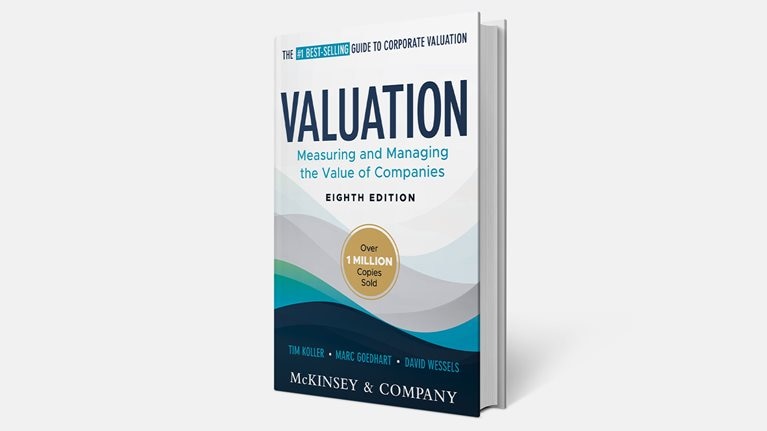Environmental, social, and governance (ESG) issues are playing an increasing role in companies’ decisions around mergers, acquisitions, and divestitures. But how do these factors link to corporate performance and deal potential? In this episode of the Inside the Strategy Room podcast, two experts share their insights on navigating this fast-changing landscape. Sara Bernow, who leads McKinsey’s work in sustainable investing and co-leads the institutional investing practice in Europe, is a co-author of the recent article, “More than values: The values-based sustainability reporting that investors want.” Robin Nuttall leads our regulatory and government affairs practice and recently co-authored “Five ways that ESG creates value.” They spoke with Strategy & Corporate Finance communications director Sean Brown at the European 2020 M&A Conference in London, which was hosted by McKinsey and Goldman Sachs. This is an edited transcript. For more conversations on the strategy issues that matter, subscribe to the series on Apple Podcasts or Google Play.
Podcast transcript
Sean Brown: Sara, could you start by explaining what ESG is and why it has risen in importance in M&A?
Sara Bernow: ESG is quite a broad set of issues, from the carbon dioxide footprint to labor practices to corruption. The reason it is relevant in M&A situations is that an increasing body of research shows a positive link between ESG performance and financial performance or value creation.
Sean Brown: Why are those three issues grouped together when they are so substantially different?
Robin Nuttall: They link together in the sense that the environment, the social factors, and the extent to which you have good governance affect your license to operate as a business within the external world. To what extent do you manage your environmental footprint? To what extent do you enhance diversity? To what extent are you transparent in your contributions to a country? That has an impact on your license to operate in the minds of the stakeholders around you: regulators, governments, and increasingly, NGOs powered by social media.
This is why there has been such high interest in ESG issues, particularly during the past five years. Consumers are now demanding high standards of sustainability and quality of employment from businesses. Regulators and policy makers are more interested in ESG because they need the corporate sector to help them solve social problems such as environmental pollution and workplace diversity. The investor community has also become much more interested. If you take the US as an example, about a quarter of the assets under management, or roughly $12 trillion, are ESG-rated investments.
Sean Brown: What are companies doing to improve their performance on ESG metrics?
Sara Bernow: That depends a lot on the industry in which you are active. Obviously, different things are important to a consumer goods producer and a software services provider. But many companies want to address the ESG factors that are material to their industries, and there is an increasing expectation of corporations to not only maximize shareholder value but take a broader role in society. For instance, if you are a consumer goods company, it’s increasingly important for you to offer sustainable products. You would see chocolate providers, for example, including fair-trade products and sustainable options in their assortments. And research shows consumers are now prepared to pay a premium for that.
Robin Nuttall: The relevant ESG factors do vary. If you take the oil and gas industry, there is a very strong focus on carbon emissions reduction. In the pharmaceuticals industry, the focus is on drug safety and quality. So, taking an industry-by-industry lens is critical and we now see ESG-scoring agencies building deeper industry-specific viewpoints.
Sean Brown: What are some of the key elements on which ESG scores have an impact?
Robin Nuttall: The first question you need to answer is, to what extent does good ESG translate into good financial performance? On that, there have been more than 2,000 academic studies and around 70 percent of them find a positive relationship between ESG scores on the one hand and financial returns on the other, whether measured by equity returns or profitability or valuation multiples. Increasingly, another element is the cost of capital. Evidence is emerging that a better ESG score translates to about a 10 percent lower cost of capital as the risks that affect your business, in terms of its license to operate, are reduced if you have a strong ESG proposition.
Evidence is emerging that a better ESG score translates to about a 10 percent lower cost of capital, as the risks that affect your business are reduced.
Sean Brown: And with a lower cost of capital you have higher value and more dry powder to make acquisitions—which brings us back to the M&A conference and your discussion there. What are some of the key findings you shared with the audience?
Robin Nuttall: We looked at the reasons behind the relationship between ESG performance and financial outcomes and identified five sources of fundamental business value that explain these findings. The first is top-line growth. If you are a consumer goods company with a stronger sustainability proposition, you are more likely to attract customer loyalty and new customer segments. There is evidence that brands with more sustainable impact grow faster than brands that have a less sustainable proposition. On the business-to-business side, there also is a link. Large companies are seeking to channel ESG through their value chain. If you want to be a supplier to one of the world’s largest retailers, for example, you had better have a strong sustainability proposition on plastics, packaging, water use, and so on.
The second aspect is cost. If you are more resource-efficient, more water-efficient, have less packaging, you will generally have a lower unit-cost structure. The third area are your regulatory relationships. If you are more responsible about your assets’ environmental footprint, then the chances of an adverse, punitive regulatory outcome are lower, so there is potentially regulatory value here.
The fourth is talent. These days, newer recruits and millennials demand purposeful work and if you are an employer that can meet that need, you will attract and retain that talent, and likely higher productivity in the workplace. The evidence suggests that this is worth roughly 2 percent of your stock price each year. Then the fifth factor we found is investment optimization. There are downside risks of holding assets that become stranded. Coal assets and oil tankers, for example, have seen significant write-downs in recent years. Conversely, there are enormous opportunities in ESG-related investments. For example, there is a huge demand for technology that could improve air quality. When you add up all five factors, they explain this roughly 10 percent advantage in your cost of capital.
Sean Brown: When we talk about the link between value creation and ESG, one thing that comes up is the difference between correlation and causation. In other words, is it that more valuable companies have the flexibility to focus on ESG topics, or is the focus on ESG improving their value? Can you comment on that, Sara?
Subscribe to the Inside the Strategy Room podcast
Sara Bernow: I think that’s one of the flaws of the research right now. There is increasing evidence for this positive correlation, but to my knowledge, causality has not yet been proven. That said, I serve a lot of the investor clients and they say that yes, we could spend a lot of additional time looking into whether there is a correlation or actual causality, but in practice, given they don’t yet have that data, they conclude that there is a link and invest with that in mind.
Sean Brown: One of the challenges for major investors is a lack of strong metrics for ESG. What is your experience of how ESG is measured and what do you see as challenges?
Sara Bernow: We recently did research to understand the landscape of sustainability reporting and quite a few interesting conclusions came out of that. First of all, it is indeed an area with a lot of information. Most large companies report extensively and ambitiously around ESG in order to inform their stakeholders. However, the stakeholders have a difficult time making sense of all that reported data. In fact, a recent survey highlighted that while 90 percent of companies report on sustainability, only 15 percent of investors can successfully integrate this information into their investment decisions.
Sean Brown: Is that disparity caused by a lack of standardization?
Sara Bernow: That is one part of it. Linked to that, companies have ten to 12 different frameworks and standards, and they are free to choose which of them to use as a basis for reporting (exhibit). Many select several, so you end up with a lot of data and, in most cases, limited transparency as to how that data relates to the company’s financial performance.

Closely linked to that is the lack of metrics standardization, as you mentioned. A metric like workplace diversity or water consumption can be defined differently depending on the standard you choose to adopt. Furthermore, there is no validation or auditing of this data, so as a stakeholder you can’t be fully comfortable with its quality. If we compare this to financial reporting, for example, we need to go back around 100 years to find the same level of maturity. Hopefully, it won’t take another 100 years—this industry is moving at a high speed—but corporations and investors today need to find their way in order to make effective ESG assessments based on the data out there.
Robin Nuttall: This is very much a nascent industry. A recent paper from Massachusetts Institute of Technology examined the different scores and found only a roughly 40 percent correlation across the scores, whereas for S&P and Moody’s it’s 97 percent. ESG is also more qualitative. What represents good diversity in a company? How do I assess that? What is good transparency?
Sean Brown: Once ESG reporting becomes more standard and can be more easily compared, how will that benefit value creation and M&A?
Sara Bernow: It will make it easier for executives or investors to correctly value assets. Given that a link between ESG performance and financial value creation has been established, it will be important to assess ESG performance in a reliable way. There are a lot of both good standard setters and ambitious stakeholders in this industry. There are also many initiatives to consolidate reporting and data. It all lies in the near future, but there is a ways to go before the data is easy to use and interpret.
Sean Brown: Robin, could you address the potential implications of this for M&A? Should executives be considering ESG factors during diligence, postdiligence, integration?
Robin Nuttall: As an acquirer you need to assess the quality of an asset and ESG is fundamental to that. First, you will want to develop a deep understanding of the ESG risks and opportunities. Are you buying into an asset that may be facing into a regulatory headwind because it’s not managing its carbon footprint responsibly? Conversely, are you buying into an asset that is well-positioned to grow given the consumer trends and can expect good developments in terms of talent and costs? These elements are important to evaluate as part of the diligence in the same way you evaluate the target’s market position and customer base.
A company that has already made the acquisition should also develop a point of view on the material risks and opportunities from ESG. You can then build that into your integration planning in deciding which initiatives to accelerate in the acquired company or where to enhance ESG attention and mitigate the risks.
There is no auditing of ESG data, so as a stakeholder you can’t be fully comfortable with its quality. If we compare this to financial reporting, we need to go back 100 years to find the same level of maturity.
Sean Brown: What are some practical ways in which companies and investors are addressing these challenges?
Sara Bernow: There are five important elements. The first one is to find out the factors that are truly material in the asset or industry you are looking into. Our research found that if you put all these standards and frameworks together, there are around 40 different ESG areas. When you then look at those through the lens of what is typically material, meaning what’s in the public eye, we can narrow them down to around nine different ESG factors. The next step is to find the subset most relevant to the industry in focus.
The second thing is to try to ensure that you have high-quality and consistent data. That means looking at metrics that are clearly defined and typically mature, based on good data sources. Third, you want to complement any quantitative data you have with qualitative data and compare that with industry peers. Fourth, you should assess the relevant improvement areas and red flags. Lastly, translate those areas of improvement into value-creation opportunities.
Sean Brown: Sara, can you elaborate on the qualitative data companies should seek out and how they can obtain it?
Sara Bernow: You would start with a few quantitative metrics that are easy to compare, such as the carbon footprint. You can then complement that with qualitative insights into how this company works to reduce its carbon footprint. For example, what ambitions does it have? What procedures and processes does it use? This will not only give you a view on how the company performs today in comparison with its peers but also how it is set up to perform in the future. Since few companies have reported extensive ESG metrics for a long time, it’s best to use qualitative data to get a view of the trajectory.
Sean Brown: Assuming a company has standardized data for its industry, it has figured out the key metrics and has established some aspirations, how does the management then put a plan in place?
Sara Bernow: You want to use all this information to quantify the value-creation potential. Since ESG is often seen as not quantifiable, this step is often overlooked. However, we see real value in several levers. For example, a company’s ability to reduce its energy consumption is a huge value-creation opportunity. It’s important, as you assess your own portfolio or that of a potential target, to truly understand and translate this opportunity into what it means in financial terms.
Sean Brown: How does the concept of ESG translate to companies where some sustainability factors are already major costs of production, as in resource-intensive businesses?
Sara Bernow: ESG puts the spotlight on sustainability not only in those companies where it is obvious from a value-creation perspective but also where it has been less obvious yet the value-creation potential is still there. You see an increasing focus, for example, on water usage in consumer goods producers. At one client where we recently conducted M&A due diligence and added a sustainability analysis, we found that around 40 percent of the value-creation opportunity for the target company was in areas linked to sustainability. That surprised both the client and us, but it was quite a powerful way of showing that ESG is a factor.
Sean Brown: Robin, Sara, any final thoughts you would like to share?
Robin Nuttall: All the evidence suggests that ESG is here to stay. It may change names—it was called corporate social responsibility before, and it’s associated with the rise of attention on corporate purpose. But the fundamental topic of the company’s license to operate is here to stay.


